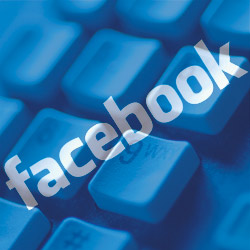
Marketing in its purest form is very simple—get the right message in front of the target audience and a successful campaign should be in the future. But with the recent changes and upgrades in the world of technology, it’s becoming more difficult for advertisers to ensure that their messages are being heard. Ten years ago, companies primarily marketed their services with television commercials, radio spots and print ads in newspapers. The world of online advertising was little more than pop-up ads or flashing banners informing web patrons they were the one millionth visitor and had just won a prize.
Technology and the advent of Web 2.0 has helped change that landscape drastically. The DVR and TIVO have given consumers the ability to fast-forward through commercials and have reduced advertisements to a minor blip between program segments. The younger generations have almost completely abandoned the radio and now use iTunes and YouTube as their primary sources for music. Circulation of newspapers is steadily declining due to the ability to go online and get the news immediately instead of waiting for the morning paper to arrive.
With the increasing popularity of social networking and online communities, many companies can find their target customers in the same place they can find everyone else—on Facebook. In just a few short years, Facebook has gone from being exclusive to college campuses to being the most popular social networking site in the world. Given the rising popularity of Facebook, it represents a tremendous opportunity for companies to promote their brands. Here are some tips to connect with current and potential customers on Facebook.
Create a Fan Page. Facebook allows companies to create “fan pages” for themselves to promote products or services. Think of this as an extension of a company’s website allowing anyone to see a brief overview of what products and services are offered. One of the greatest benefits of creating a fan page is the ability for employees and customers to become “fans” of the organization. Once an individual becomes a fan of an organization, a message is posted on their personal news feed letting their friends know that they support this company. This has a great impact because most people have personal relationships with their Facebook friends, and it serves as a positive word-of-mouth campaign. This can be very effective for restaurants to allow potential customers to preview the menu, photographers to allow interested parties to view a portfolio of their work, and universities to create a strong alumni community in the hopes of increasing involvement and donations.
Advertisements. Online advertising has come a long way in the last few years, and if done correctly, can be a huge contributor towards generating traffic to a company’s website. Facebook advertisements are very cost-effective and can be specified to reach the ideal audience. Facebook allows advertisers to concentrate their ads based on geographical location, gender, age, education, relationship status, workplace and whatever keywords an individual might enter to further describe his or her profile. This can be very effective for the wedding industry focusing their advertisements on recently engaged couples; car dealerships advertising sports cars to young, single males; and student loan companies advertising to high school and college students.
Facebook offers two options for how companies can run advertisements. Pay-per-click is an option where every time an individual clicks on the advertisement the company is billed a predetermined amount. Pay-per-impression is based on how many times an ad appears on computer screens and gives no consideration to whether or not the ad is actually clicked. Facebook has tools available that allow for daily budgeting of advertisements to keep expenses on track and provide information for measuring the results of the campaign.
Polls. An interesting feature Facebook recently created is the ability to have members of the online community take a poll and have the results tracked. The cost to conduct a poll is a one-dollar startup fee, and respondents cost about 25 cents per click. Polls can be targeted towards a certain demographic in the same way as advertisements. An example of an effective time to create a poll would be if a movie theater was looking for feedback on whether they should add a midnight show for a soon-to-be-released movie. If the majority of respondents were in favor of attending the late night show, the theater would have some data to move forward with adding the additional viewing.
Events. Occasionally, throughout the course of a calendar year, businesses have events taking place and need a little additional publicity. Events are a great way to invite potential customers to a special sale, ribbon cutting or a business after hours meeting. There is no cost to promote an event on Facebook and the option to provide an RSVP form is available as well.
Marketplace. The marketplace is an application that individuals can add to their profiles. It’s Facebook’s version of Craigslist that can help small businesses and startup companies get their products noticed. A listing on the marketplace only costs one dollar, and the results are filtered by geographic location.
Everyday people flock to Facebook as the focal point of their online presence. The opportunity for companies to gain market share is just a few clicks away. If the goal is to expand the customer base, companies can find me where they find the rest of their customers—on Facebook.

